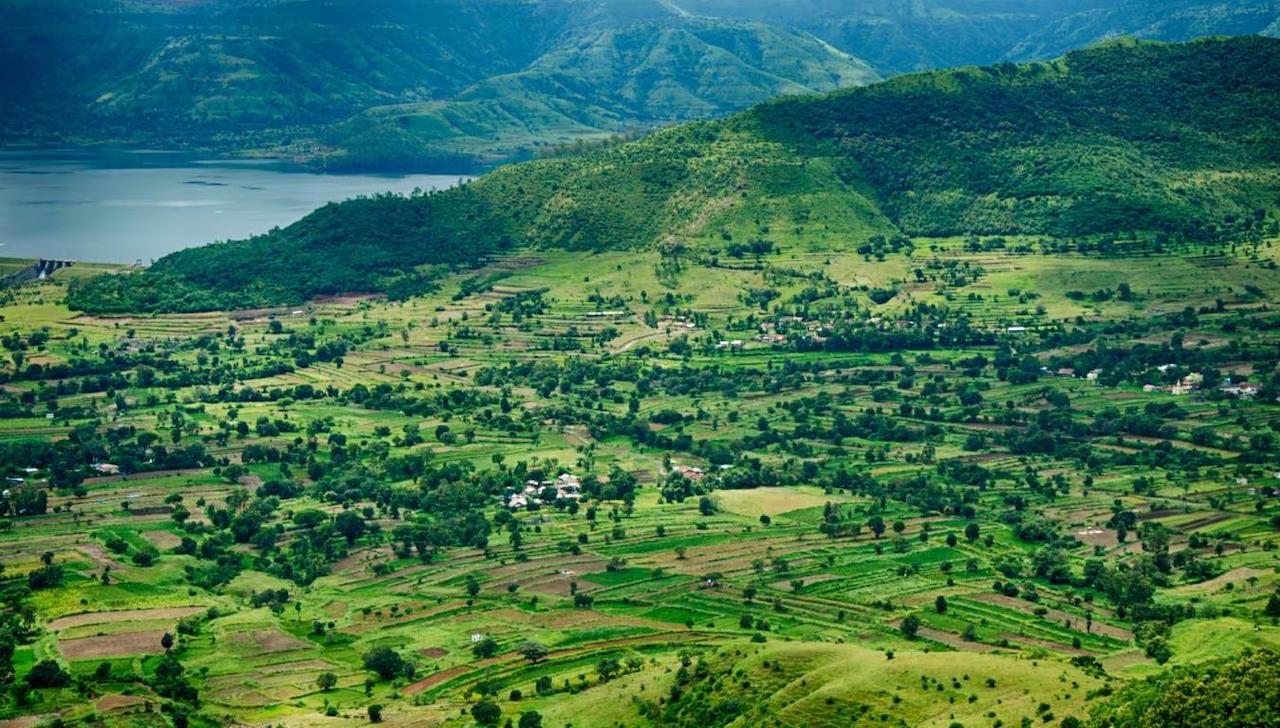UP Accidents Claim Lives of Police Officer and Local Worker in Separate Incidents
Satara Village in Maharashtra Shows How Rural India Can Be Self-Reliant and Beautiful
Satara, Maharashtra, Nov 23, 2025
Far from the noise and rush of city life, Satara village near the Tadoba Andhari Tiger Reserve in Maharashtra is quietly setting an example of how rural communities can be self-reliant, clean, and well-organized. A recent video by travel vlogger Ankita Kumar showcased the village, highlighting how the community has come together to build a sustainable, disciplined, and inspiring environment.
The streets of Satara are spotless, maintained by a community system where villagers take turns cleaning the entire village each day. There are no open drains or garbage piles, reflecting a high level of civic pride and responsibility. Basic amenities are modern and eco-friendly: hot water is provided through a common solar heater, drinking water is accessible via an RO water ATM, and every home has a metered tap to ensure fair use. Streetlights are solar-powered and turn on automatically after sunset.
The village also places strong emphasis on community welfare. There is a hangout spot for senior citizens to relax and socialize, and children have access to a small library. Residents practice rainwater harvesting, composting, and sanitation is strictly managed with no open toilets anywhere. Even cattle sheds are clean and odor-free, highlighting the village’s commitment to hygiene.
Ankita praised the role of one man, Gajanan, who spent five years planning and persuading the villagers to adopt this way of life. Under his leadership, the community has successfully combined modern technology with traditional values, creating a model village where everyone contributes time, labor, and resources. Women play a prominent role in the village, including working as safari guides in Tadoba National Park.
The video shared on social media impressed viewers nationwide. Many commented on how inspiring it was to see such discipline and cooperation, suggesting that this village could serve as a blueprint for others. Visitors noted that Satara is proof of what can be achieved when people care for their environment and work together for the common good.
For travelers interested in visiting, Satara village can be reached via the Tadoba-Andhari Tiger Reserve. The nearest airport is Dr. Babasaheb Ambedkar International Airport in Nagpur, approximately 106–140 km away. Alternatively, travelers can take a taxi or bus from Chandrapur Junction, which is about 37 km from the reserve, or from Nagpur Railway Station, around 103 km away. Guided tours or local drivers can help visitors explore the village after visiting the national park.
Satara village stands as a testament to how rural India can combine self-reliance, sustainability, and community spirit, offering a cleaner, greener, and more organized way of life. The village’s efforts show that with dedication, leadership, and collective action, even small communities can achieve remarkable progress while inspiring others to follow their example.
Satara Village in Maharashtra Shows How Rural India Can Be Self-Reliant and Beautiful
Satara village in Maharashtra, near the Tadoba Andhari Tiger Reserve, is setting a new benchmark for rural self-reliance and cleanliness. A recent video by travel vlogger Ankita Kumar highlighted how the village combines sustainability, modern amenities, and strong community spirit to create an inspiring environment.
The village is maintained through a system where residents take turns cleaning the streets daily. There are no open drains or garbage piles, and sanitation is strictly managed. Hot water is provided through a solar heater, drinking water is available via an RO water ATM, and every home has a metered tap. Solar-powered streetlights illuminate the village automatically at night, and even cattle sheds are clean and odor-free.
Community welfare is prioritized with a hangout space for senior citizens, a library for children, and eco-friendly practices like rainwater harvesting and composting. Leadership by Gajanan, who spent years convincing villagers to adopt this lifestyle, has been key. Women play a prominent role in the community, including working as safari guides in Tadoba National Park.
Satara village demonstrates what can be achieved with dedication, cooperation, and a focus on sustainability. It is a model for other villages and cities alike, showing the power of community-driven progress.














Add Comment